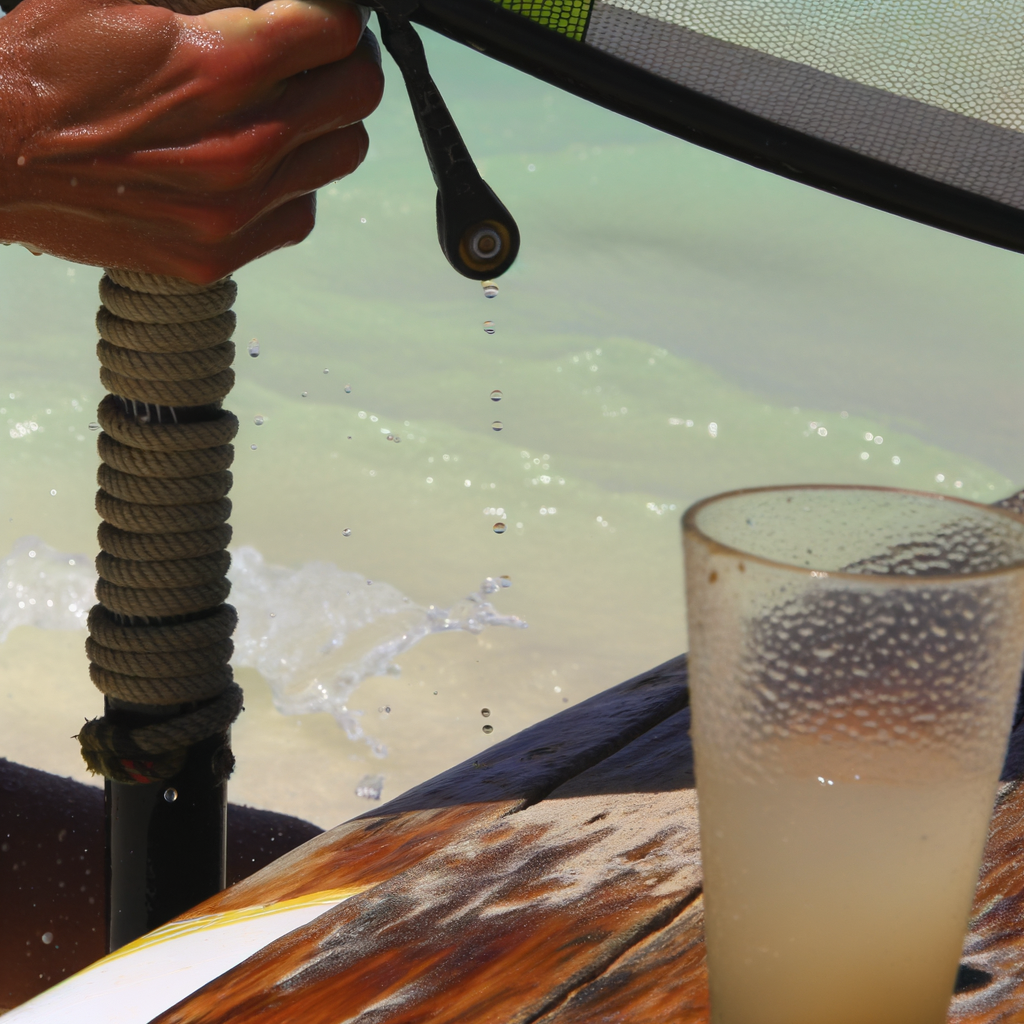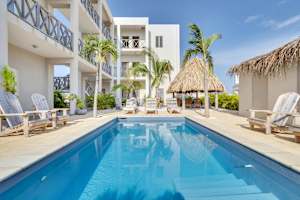Bonaire Weather: Sunshine, Trade Winds and Warm Seas
Always sunshine, always that summer feeling? Bonaire’s weather is refreshingly straightforward – and that’s exactly what makes the island so appealing. No stress, no surprises, just ideal days for diving, windsurfing, or relaxing on the beach. Discover how Bonaire’s climate keeps every day effortlessly perfect. Discover now why Bonaire always shines.
Last updated: 30-12-2025
Bonaire weather is one of the main reasons people fall in love with the island. It is almost always warm, sunny and pleasantly breezy. In this guide you’ll find out what to expect in each season, how little rain usually falls and which months are best for your favorite activities.
Tropical climate with plenty of sunshine
Bonaire officially has a tropical savanna climate, often described as a dry tropical climate. Temperatures stay very stable throughout the year. During the day they are usually between 82 and 90 degrees Fahrenheit, or about 28 to 32 degrees Celsius. Soon after sunrise it already feels pleasantly warm – perfect for an early swim or a quiet walk along the waterfront.
After sunset it cools down a little. In the evening and at night, temperatures usually drop to around 74 to 77 degrees Fahrenheit, about 23 to 25 degrees Celsius. It almost never feels cold on Bonaire, even if you take a late stroll along the shore or relax on your terrace.
The island also enjoys a lot of sunshine. On average, Bonaire gets around 8 to 9 hours of sun per day and more than 3,000 hours per year. That is roughly twice as much as in many regions of Europe or North America, so your chances of blue skies during your trip are high.
All this sunshine makes outdoor living easy. Whether you like diving, snorkeling, sailing or just relaxing by the pool, the Bonaire weather usually cooperates.

Small temperature changes thanks to sea and trade winds
One of the nicest things about Bonaire weather is how little the temperature changes between seasons. The warm Caribbean Sea around the island and the steady northeast trade winds keep conditions very even.
During the slightly cooler months, the sea keeps the land comfortably warm. In the warmer period, the sea breeze provides natural cooling. Most days, the trade wind feels like natural air conditioning, especially when you sit on a shaded porch or under a palapa on the beach.
Without this constant breeze, the heat would feel much heavier. Because it almost always blows, you can still sit outside in the middle of the day, especially in the shade or near the water. Temperatures below 68 degrees Fahrenheit, around 20 degrees Celsius, are very rare. Even on the coolest nights, the thermometer usually stays well above that level.
This stable Bonaire weather makes the island perfect if you want to escape winter or simply want a very sun-safe summer break.
Stay at Sunset Breeze Penthouse
Would you like to experience Bonaire weather from a quiet and comfortable home base? Sunset Breeze Penthouse in peaceful Belnem offers a large terrace with a view toward the sea, two cozy bedrooms and a shared swimming pool. At just 1.3 km from popular dive sites, restaurants and Bachelor’s Beach, you can fully enjoy the island’s outdoor lifestyle with the trade winds as your natural cooling.

Rain on Bonaire: not much, often short showers
Compared to many other tropical destinations, the amount of rain on Bonaire is quite low. On average, the island receives around 18 inches of rain per year, which is about 460 millimeters. Some years are extra dry, with totals closer to 350 millimeters, while other years are wetter when more tropical systems pass nearby.
Most rain falls in the last quarter of the year. October, November and December tend to be a bit wetter and together account for about half of the annual rainfall. Even then, showers are usually short and can be intense, but they often clear quickly. For the rest of the day it is often sunny again.
The driest period usually runs from February through June. In these months, average rainfall stays below 0.8 inches per month, about 20 millimeters. In some months, no measurable rain falls at all. The landscape can look dry, but for sun seekers this is a very attractive time to experience Bonaire weather.
Humidity and how the weather feels
The relative humidity on Bonaire is fairly high, at around 76 percent on average. It only varies a few points over the year. In the warmest and muggiest months, it can feel a bit sticky, especially when you are out of the wind or in a sheltered area.
Still, Bonaire weather usually feels comfortable because of the constant trade winds. When you stand in an open spot or near the sea, the breeze cools your skin. Many homes and apartments are designed to catch the wind, with large windows, shutters and generous porches.
Indoors, you can also stay comfortable. Many accommodations offer ceiling fans and air conditioning in the bedrooms, so you sleep well at night. During the day, most people spend their time outdoors in the shade and in the wind. That way, you enjoy the tropical Bonaire weather without it becoming too hot.
Best time to visit for Bonaire weather
Because Bonaire weather is so stable, you can visit any time of year. If you want the very lowest chance of rain and as much sunshine as possible, February through June is ideal.
If you prefer a greener landscape and don’t mind a quick tropical shower now and then, the rest of the year also works very well. Short showers often create dramatic clouds and fresh colors, and the sun usually returns quickly.
Divers and snorkelers find good conditions almost all year. The sea is warm and usually clear, and the steady trade winds make Bonaire a paradise for windsurfers and kitesurfers as well. On the website of STINAPA Bonaire you can read more about the protected marine park around the island.
Whatever you plan to do, the friendly Bonaire weather means your activities are rarely cancelled because of bad conditions. Ready to plan your trip after reading about the climate? Take a look at our vacation rentals on Bonaire and choose the perfect base for your time in the sun.